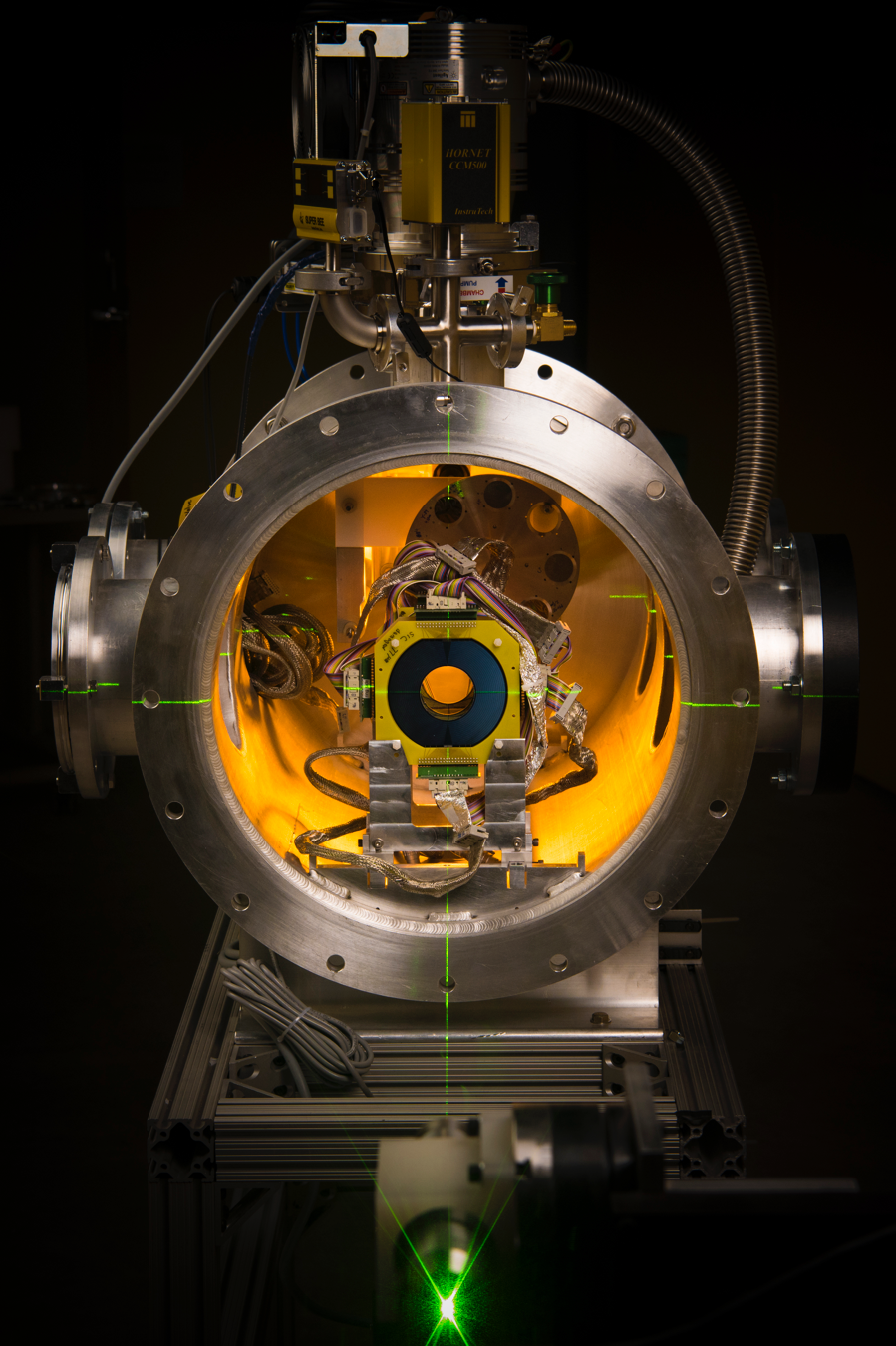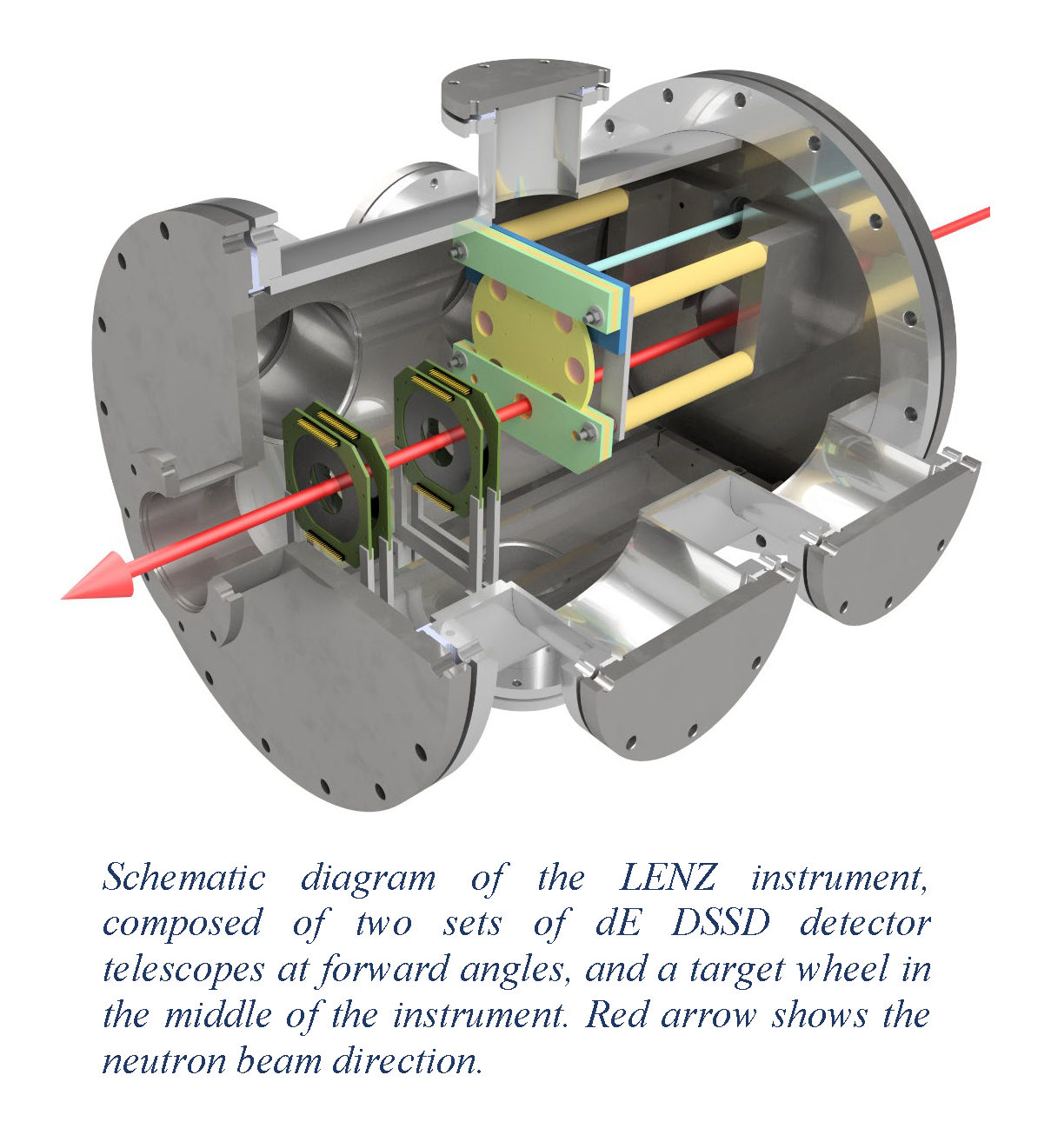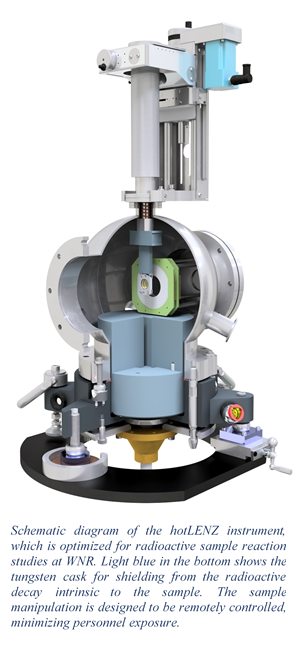Target 4 Flight Path 15R
4FP15R is dedicated to study neutron-induced charged particle reactions using the Low Energy NZ (LENZ) instrument with stable and radioactive samples. Applications include nuclear reaction studies, nuclear astrophysics, radiochemical diagnostics, and next-generation nuclear reactor design.
Target 4 Flight Path 15R
The Target 4 Flight Path 15R is located in building 1302 with an available path length of 13 – 29 m from the T4 spallation target.
Th e long flight path length allows more than one experiment to be accommodated in parasitic mode if needed. This length also allows transmission measurements at neutron energy higher than 1 MeV to be performed. Sweeper magnets are located after the shutter and the last collimator in the flight path, in order to deflect charged particles generated from the spallation neutron target and along the flightpath in beam collimation materials. Flight path 15R has a variable jaw shutter with a maximum aperture of 4" square. This adjustable shutter aperture provides flexibility in delivered beam flux at the- sample location for the case of detector characterization measurements.
e long flight path length allows more than one experiment to be accommodated in parasitic mode if needed. This length also allows transmission measurements at neutron energy higher than 1 MeV to be performed. Sweeper magnets are located after the shutter and the last collimator in the flight path, in order to deflect charged particles generated from the spallation neutron target and along the flightpath in beam collimation materials. Flight path 15R has a variable jaw shutter with a maximum aperture of 4" square. This adjustable shutter aperture provides flexibility in delivered beam flux at the- sample location for the case of detector characterization measurements.
Presently, the Low Energy Neutron-induced charged particle (Z) (LENZ) instrument is dedicated to measure neutron-induced charged particle reactions with large solid angle coverage and low energy thresholds.
Implementation of state-of-the-art waveform digitizers enhance the power of the experimental system in separating and identifying different charged particles, obtaining improved timing- and energy- resolutions, and processing high throughput rates.

As shown in the schematic diagram of detector configurations, the LENZ is designed for flexibility in the detection of charged particles, energies, and solid angles by coupling a gas detector with silicon detectors. Each double-sided silicon strip detectors provides angular distributions from their 16 annular segmentations in order to improve the precision and uncertainty of measured differential cross sections. It has been demonstrated that the LENZ can provide the differential cross sections to discrete levels with angular distributions, within its experimental resolving power. The number of silicon detectors (detector thickness ranges from 60 micron to 1500 micron) can be easily reconfigured, in order to increase the solid angle or tune energy loss in the detectors. At the moment, the instrument is commissioned and well utilized, measuring (n,p) and (n,a) reaction cross sections with neutron energies up to 50MeV at the WNR facility.
 The hotLENZ experimental system is being developed to study (n,p) and (n,a) reactions with radioactive samples produced from the Isotope Production Facility at LANSCE. Due to the potential for high radiation dose rates, the sample transport and manipulation will be remotely controlled. The experimental system has also been designed for rapid assembly, minimizing personnel exposure while preparing for these reaction studies. Charged particle detection capabilities include double sided silicon detectors or a single crystalline diamond detector array.
The hotLENZ experimental system is being developed to study (n,p) and (n,a) reactions with radioactive samples produced from the Isotope Production Facility at LANSCE. Due to the potential for high radiation dose rates, the sample transport and manipulation will be remotely controlled. The experimental system has also been designed for rapid assembly, minimizing personnel exposure while preparing for these reaction studies. Charged particle detection capabilities include double sided silicon detectors or a single crystalline diamond detector array.
The experimental system can also be utilized at T4 90L flight path in order to utilize the higher neutron flux available below 5 MeV, in contrast to 15R (shown in the comparison of different neutron energy spectra at WNR). This expanded capability is useful for the case of low cross-section measurements which are typical of reaction studies of astrophysical interest.

